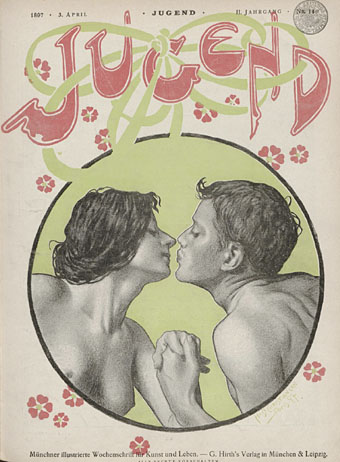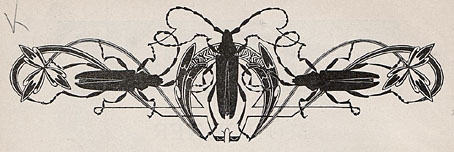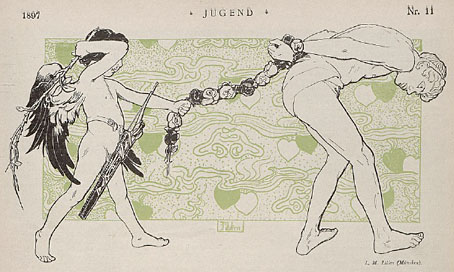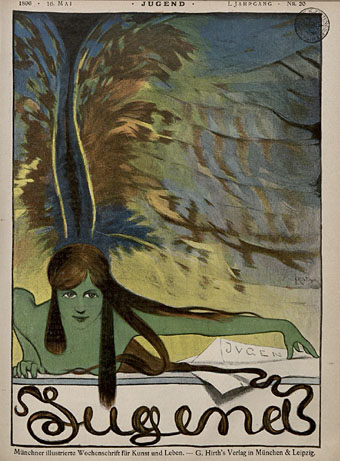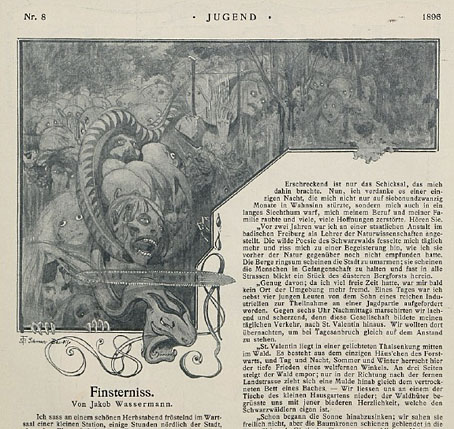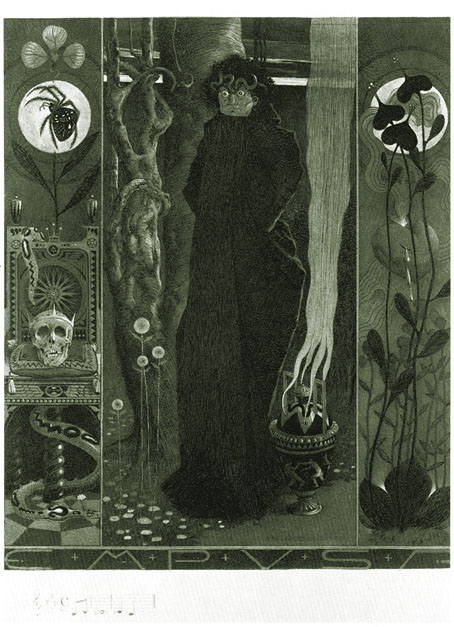
The Empusae, we’re told, were daughters of Hecate in Greek mythology, sent to harass the unwary traveller on lonely roads, as if travellers on lonely roads didn’t have enough to worry about from human malefactors. The sinister femme fatale of mythology was a popular subject among fin de siècle artists which perhaps explains why Carl Schmidt-Helmbrechts (1871–1936) went to such trouble with this etching of one of the baleful demonesses.
There’s very little information about Schmidt-Helmbrechts on the web and little of his other work to be seen; this picture was scanned from High Art and Low Life: ‘The Studio’ and the fin de siècle (1993) and even there they don’t give a date for it although I’d guess it was a product of the 1890s. The description does say it was printed in olive, however, so I’ve taken the liberty of tinting their black and white version accordingly. I’ve no idea what the musical notes at the bottom left are for but I like the lettering design, there’s almost enough of it to develop into a font.
Update: I’ve since discovered that the print was made in 1894.
Elsewhere on { feuilleton }
• The etching and engraving archive
Previously on { feuilleton }
• The art of Philippe Wolfers, 1858–1929
• The Masks of Medusa
